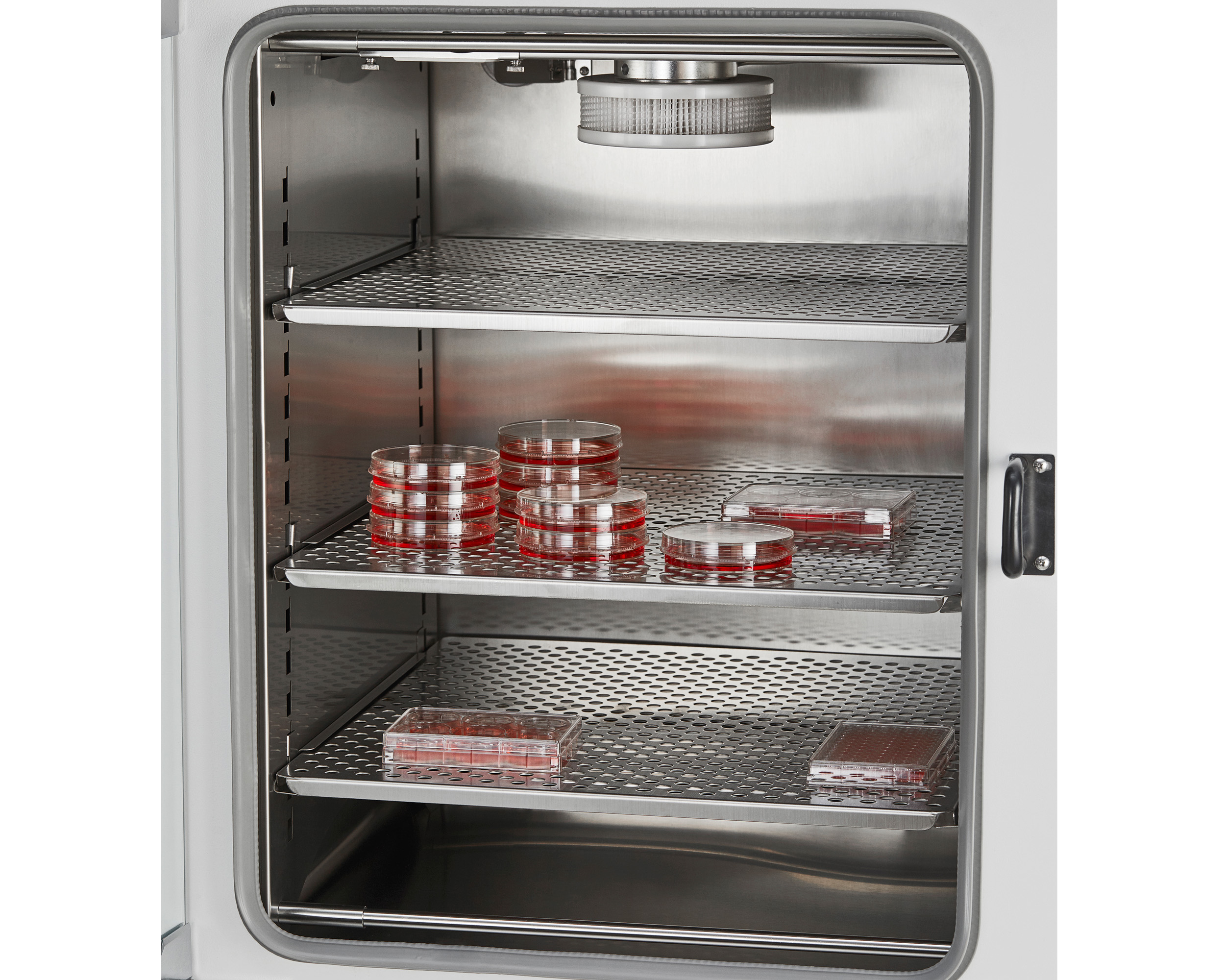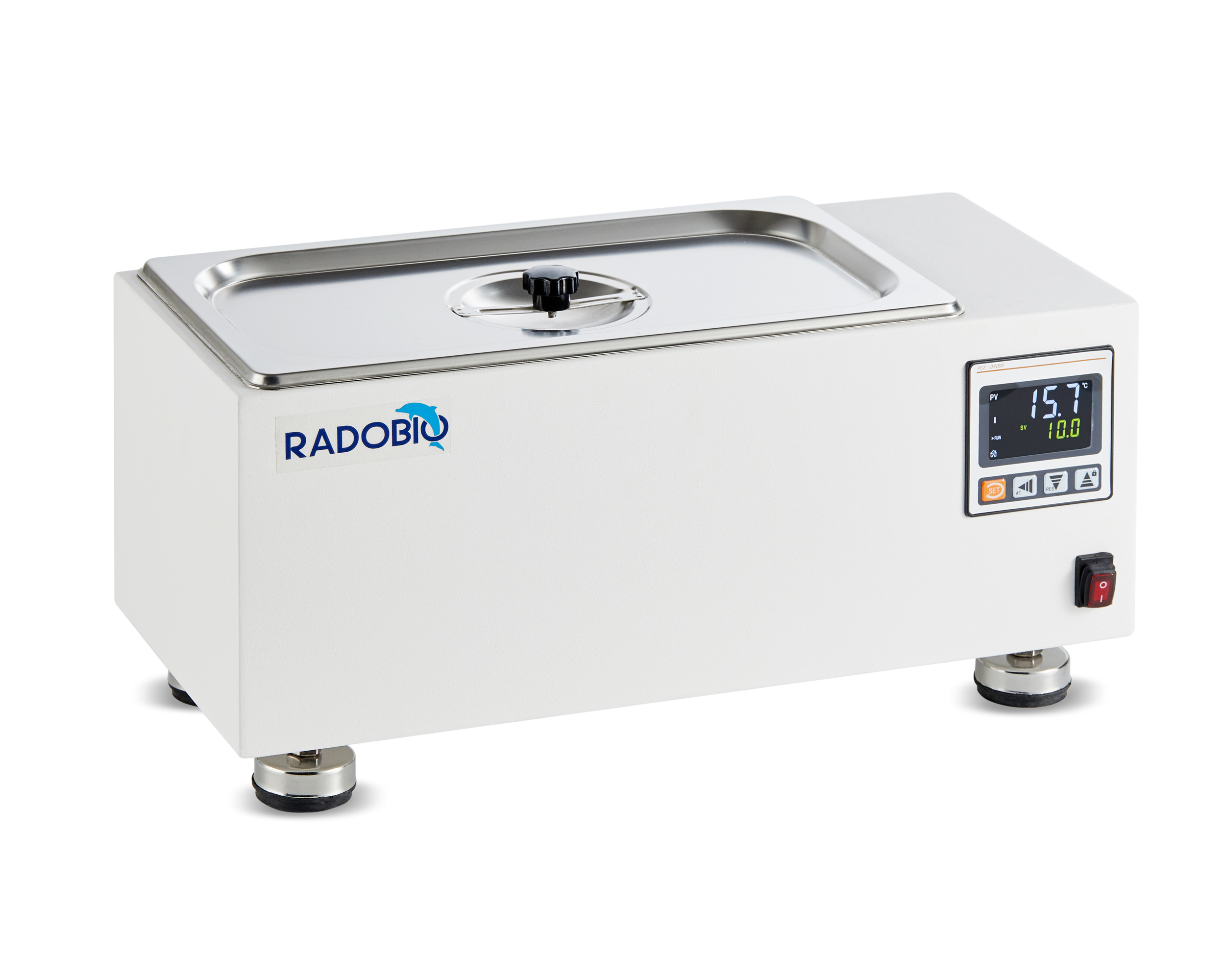Effect of temperature variation on cell culture
Temperature is an important parameter in cell culture because it affects the reproducibility of results. Temperature changes above or below 37°C have a very significant effect on the cell growth kinetics of mammalian cells, similar to that of bacterial cells. Changes in gene expression and modifications in cellular structure, cell cycle progression, mRNA stability can be detected in mammalian cells after one hour at 32ºC. In addition to directly affecting cell growth, changes in temperature also affect the pH of the media, as the solubility of CO2 alters the pH (pH increases at lower temperatures). Cultured mammalian cells can tolerate significant temperature decreases. They can be stored at 4 °C for several days and can tolerate freezing to -196 °C (using appropriate conditions). However, they cannot tolerate temperatures above about 2 °C above normal for more than a few hours and will die quickly at 40 °C and above. To ensure maximum reproducibility of results, even if the cells survive, care needs to be taken to maintain the temperature as constant as possible during the incubation and handling of the cells outside the incubator.
Reasons for temperature variations inside the incubator
You will have noticed that when the incubator door is opened, the temperature drops rapidly to the set value of 37 °C. In general, the temperature will recover within a few minutes after the door is closed. In fact, static cultures need time to recover to the set temperature in the incubator. A number of factors can affect the time it takes for a cell culture to regain temperature after treatment outside the incubator.These factors include:
- ▶the length of time the cells have been out of the incubator
- ▶the type of flask in which the cells are grown (geometry affects heat transfer)
- ▶Number of containers in the incubator .
- ▶Direct contact of the flasks with the steel shelf affects the heat exchange and the speed of reaching the optimal temperature, so it is better to avoid stacks of flasks and to place each vessel
- ▶directly on the shelf of the incubator.
The initial temperature of any fresh containers and media used will also affect the time it takes for the cells to be at their optimal state; the lower their temperature, the longer it takes.
If all of these factors change over time, they will also increase the variability between experiments. It is necessary to minimize these temperature fluctuations, even if it is not always possible to control everything (especially if several people are using the same incubator).
How to minimize temperature variations and reduce temperature recovery time
By preheating the medium
Some researchers are accustomed to pre-warming whole bottles of media in a 37 °C water bath to bring them to this temperature before use. It is also possible to preheat the medium in an incubator that is only used for medium preheating and not for cell culture, where the medium can reach an optimal temperature without disturbing the cell cultures in another incubator. But this, as far as we know, is usually not an affordable expense.
Inside the Incubator
Open the incubator door as little as possible and close it as quickly. Avoid cold spots, which create temperature differences in the incubator. Leave space between the flasks to allow air to circulate. The shelves inside the incubator can be perforated. This allows for better heat distribution as it allows air to pass through the holes. However, the presence of holes can lead to differences in cell growth, because there is a temperature difference between the area with holes and the area with meta. For these reasons, if your experiments require highly uniform growth of the cell culture, you can place the culture flasks on metal supports with smaller contact surfaces, which are usually not necessary in routine cell culture.
Minimizing Cell Processing Time
To minimize the time spend in cell treatment process, you need to
- ▶Organize all the necessary materials and tools before you start working.
- ▶Work quickly and smoothly, reviewing experimental methods in advance so that your operations become repetitive and automated.
- ▶Minimize contact of liquids with ambient air.
- ▶Maintain a constant temperature in the cell culture lab where you work.
Post time: Jan-03-2024





